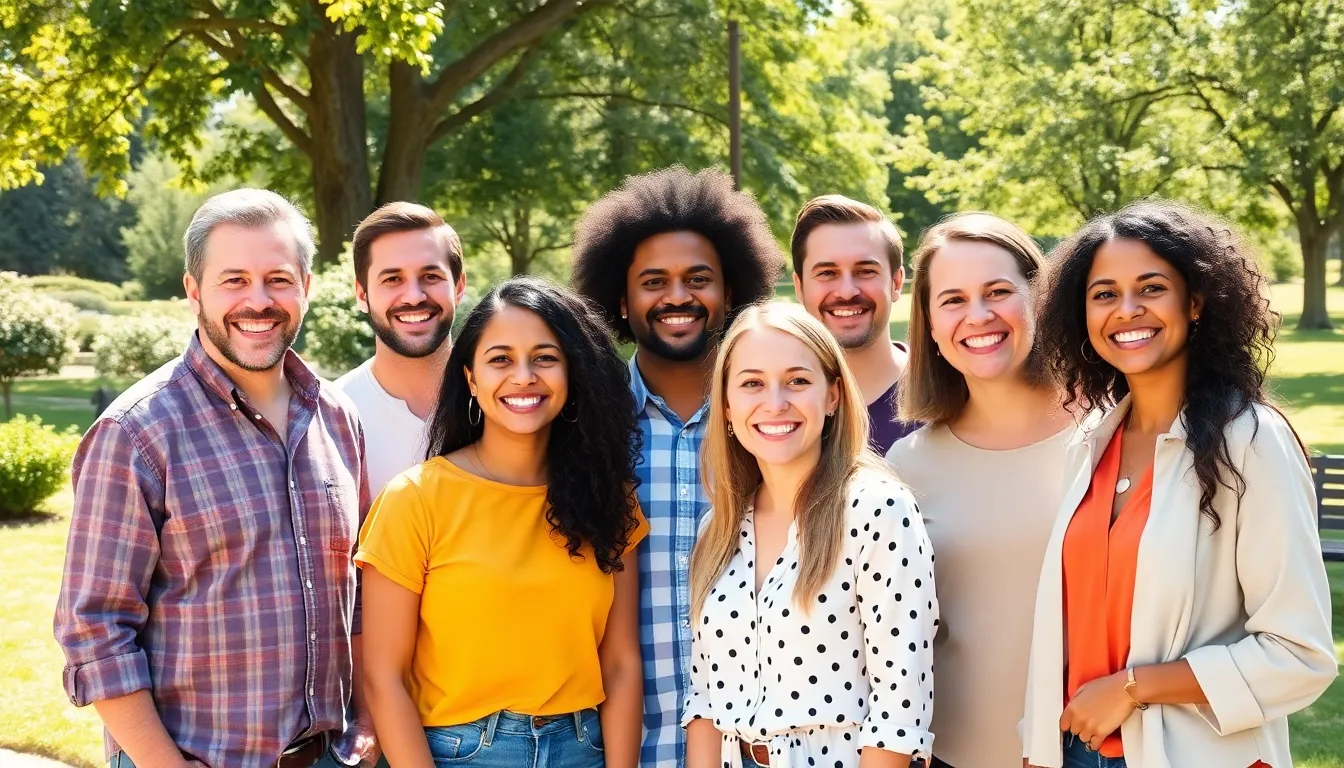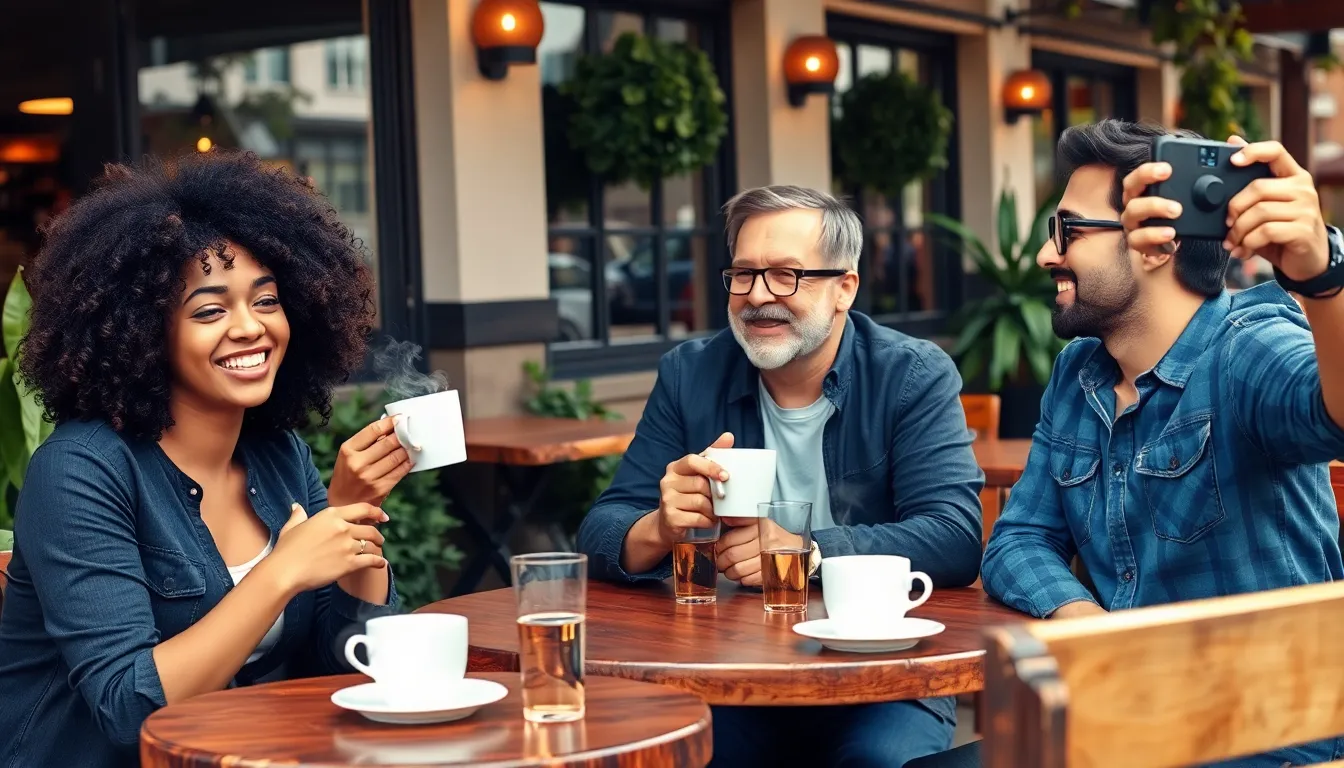Ever wondered where that dazzling smile of yours actually takes place? It’s not just a random occurrence; it’s a delightful dance of muscles and emotions. When someone flashes a grin, it’s a magical interplay happening right in the face, specifically in the realm of the mouth and eyes. Yes, those cheeky little muscles are working overtime to spread joy and warmth.
Table of Contents
ToggleUnderstanding The Concept Of A Smile
A smile involves intricate muscle movements that convey emotions. Specific facial muscles, including the zygomatic major and orbicularis oculi, play crucial roles. When these muscles contract, they create a visible sign of happiness or friendliness.
Research shows that the brain processes these movements quickly, leading to immediate interpretations of mood. Studies indicate smiles can influence the feelings of those observing, enhancing social bonds. The two types of smiles, genuine and social, reflect different emotional states and intentions.
Genuine smiles, or Duchenne smiles, engage the eye muscles, signifying authentic joy. Social smiles lack this engagement, often serving as polite gestures in social situations.
Cultural contexts may dictate how smiles are perceived. In some cultures, smiles convey warmth and approachability. In others, they might improve interactions among individuals with unknown relationships.
Understanding the connection between a smile and well-being also proves essential. Smiling has been linked to positive mental health outcomes and reduced stress levels. Studies suggest that just the act of smiling can trigger the brain to release endorphins, promoting a sense of happiness.
Interpersonal dynamics significantly benefit from smiling. Engaging with others through a smile fosters better communication and collaboration. Furthermore, smiling often invites similar reactions in others, creating a positive feedback loop in social settings.
Ultimately, grasping the mechanics of a smile reveals its impact on relationships and emotional expression. Encouraging smiles both in oneself and in others can lead to more fulfilling interactions.
The Anatomy Of A Smile


A smile involves a precise combination of muscular and neurological activities. Understanding these processes reveals how a simple expression impacts emotions and social interactions.
Facial Muscles Involved
The key facial muscles involved in smiling include the zygomatic major and orbicularis oculi. The zygomatic major pulls the corners of the mouth upward, creating the hallmark of a smile. Active engagement of the orbicularis oculi results in the characteristic crinkling of the eyes, indicating genuine emotion. Other muscles, such as the risorius, assist in the movement, contributing to varied smile types. Genuine smiles involve the activation of both the mouth and eye muscles, signaling authentic joy and warmth. Observers interpret these signals instantly, forming quick judgments on emotions based solely on these muscle movements.
Brain Activity During Smiling
Smiling triggers specific brain activity that processes emotions and social cues. Research shows that the brain’s reward system activates upon smiling, resulting in the release of dopamine and endorphins. These neurotransmitters elevate mood and foster feelings of happiness. Additionally, brain regions responsible for emotional processing, such as the amygdala and prefrontal cortex, engage during smiling. Rapid neurological responses influence perceptions in social environments, enhancing connections between individuals. Thus, smiling not only reflects emotion but also reinforces social bonds through its profound effects on the mind and body.
Emotional Contexts Of Smiling
Emotions play a crucial role in the context of smiling. Understanding how various emotional states influence smiles reveals their significance in human interactions.
Social Interactions
Smiling fosters connections in social settings. It signifies friendliness and invites engagement, helping to break the ice during new interactions. Individuals often mirror each other’s smiles, creating a bonding effect. Cognitive research indicates that smiling can increase trust and cooperation. Engaging eyes signal authenticity, making genuine smiles powerful in building relationships. Group dynamics also benefit from smiles, enhancing teamwork and collaboration among members.
Cultural Variations
Cultural backgrounds shape how smiles are perceived worldwide. In some cultures, smiles indicate politeness or respect, while others associate them with happiness. For example, Western societies often view smiles as expressions of joy, whereas certain Asian cultures may use smiles to maintain harmony or conceal discomfort. Understanding these differences is vital for effective cross-cultural communication. Misinterpretations can arise if one misreads the intention behind a smile. Appreciating these cultural nuances fosters better interactions and deeper connections across diverse communities.
The Importance Of Smiling
Smiling holds significant importance in human interactions and emotional well-being. It not only enhances mood but also fosters connections.
Psychological Benefits
Smiling boosts mental health by triggering the release of dopamine and endorphins. These neurotransmitters elevate mood and create feelings of happiness. Research indicates that individuals who smile frequently report lower levels of stress and anxiety. A genuine smile can also encourage relaxation in both the smiler and those nearby. Smiling acts as a natural mood enhancer, promoting an overall sense of well-being. Engaging in this simple act regularly cultivates a positive mindset, creating a ripple effect in one’s emotional state.
Social Advantages
Socially, smiling acts as a universal signal of friendliness and warmth. It invites engagement and initiates positive interactions. Individuals who smile tend to attract others, fostering connections and improving communication. Observers often mirror smiles, creating a bond that enhances mutual trust. Smiling also signals approachability, making it easier to navigate new social situations. Cultural interpretations of smiles vary, but their ability to facilitate interactions remains consistent globally. This powerful gesture can transform dynamics, enhancing cooperation and collaboration within groups.



